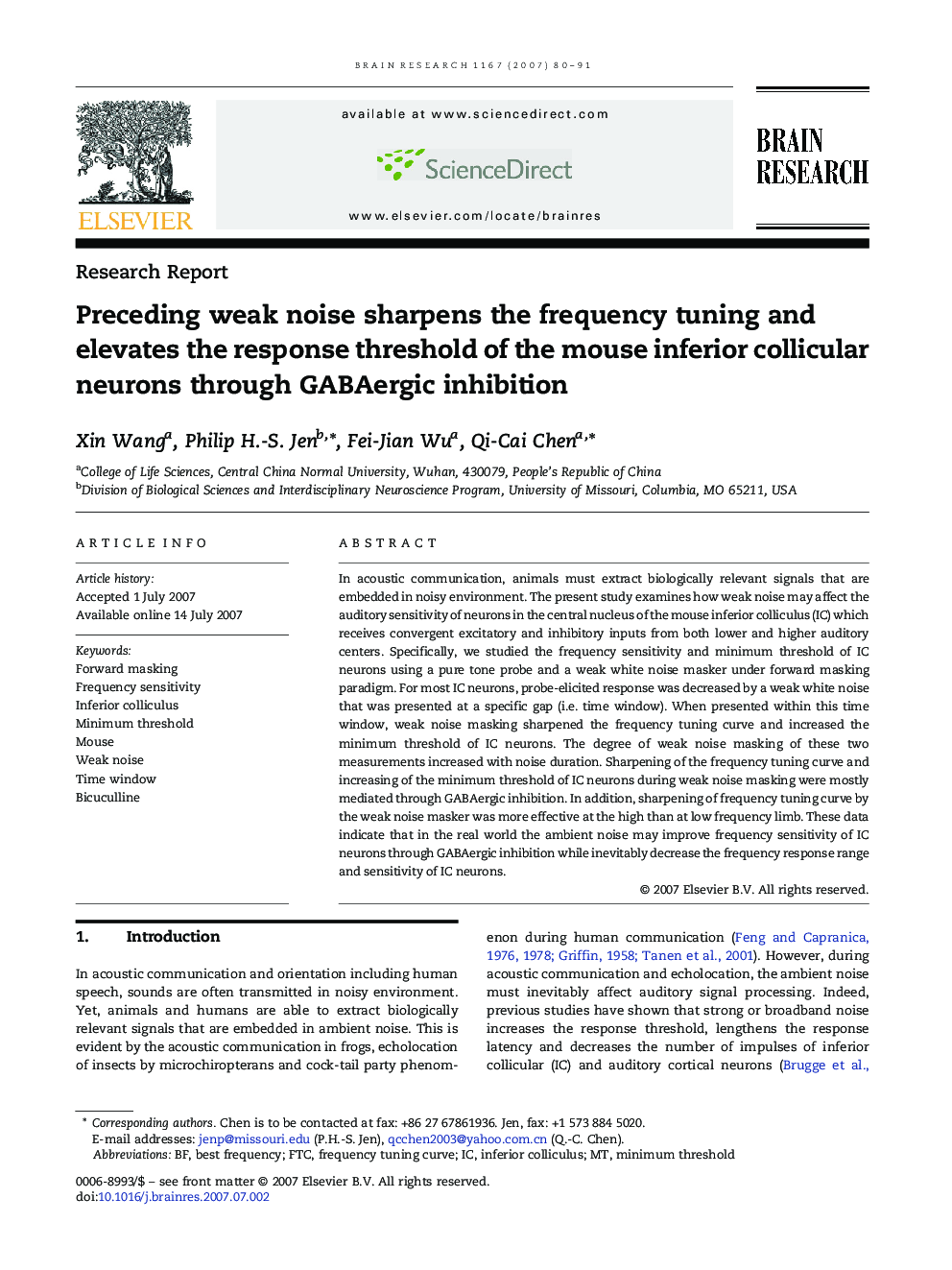| Article ID | Journal | Published Year | Pages | File Type |
|---|---|---|---|---|
| 4330720 | Brain Research | 2007 | 12 Pages |
In acoustic communication, animals must extract biologically relevant signals that are embedded in noisy environment. The present study examines how weak noise may affect the auditory sensitivity of neurons in the central nucleus of the mouse inferior colliculus (IC) which receives convergent excitatory and inhibitory inputs from both lower and higher auditory centers. Specifically, we studied the frequency sensitivity and minimum threshold of IC neurons using a pure tone probe and a weak white noise masker under forward masking paradigm. For most IC neurons, probe-elicited response was decreased by a weak white noise that was presented at a specific gap (i.e. time window). When presented within this time window, weak noise masking sharpened the frequency tuning curve and increased the minimum threshold of IC neurons. The degree of weak noise masking of these two measurements increased with noise duration. Sharpening of the frequency tuning curve and increasing of the minimum threshold of IC neurons during weak noise masking were mostly mediated through GABAergic inhibition. In addition, sharpening of frequency tuning curve by the weak noise masker was more effective at the high than at low frequency limb. These data indicate that in the real world the ambient noise may improve frequency sensitivity of IC neurons through GABAergic inhibition while inevitably decrease the frequency response range and sensitivity of IC neurons.
